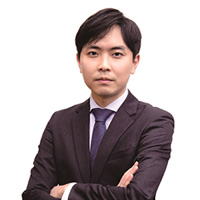Talks over loan of Buddhist relics drag on over terms
By Choi Si-youngPublished : Oct. 10, 2024 - 15:09

Negotiations between a US museum and the South Korean government are dragging out over the terms on which the museum will lend a 14th-century Buddhist reliquary to Korea, as the two sides follow up on their February agreement to push for a temporary loan.
According to Rep. Lee Ki-heon of the Democratic Party of Korea on Thursday, the Museum of Fine Arts, Boston, has yet to say what it thinks of a June proposal by the Korea Heritage Service that it would immediately return the Buddhist reliquary to the Boston museum once the loan period expires. The museum had requested that Korea guarantee that in writing.
The US museum donated the “sarira,” or bead-shaped objects found among the cremated remains of Buddhist spiritual masters, to Korea in April, citing their religious significance. As for the reliquary, which once contained the sarira, the museum and Korean authorities agreed to push for a loan.
Since 2009, Korea had sought to repatriate the sarira and the container as a set, but the museum has essentially ruled that out, maintaining that there is no record indicating theft, looting or coercive transfer of the container itself. The container, the museum notes, was legitimately acquired from a dealer in 1939.
The repatriation talks, which had been stalled since 2009 over the agency’s insistence on bringing back the sarira and container together, gained momentum in April last year after first lady Kim Keon Hee floated the idea during a tour of the museum on the sidelines of President Yoon Suk Yeol’s state visit to the US.
Choi Eung-chon, head of the KHS, has acknowledged Kim played a role in revisiting the issue.
Rep. Lee, however, argued that the agency had an ulterior motive in reneging on its previous commitment to seeking a complete return of the sarira and the container at the same time.
“The agency appears to want to credit the first lady for repatriating the sarira after years of unsuccessful negotiation over the matter,” Lee said, suggesting that dropping the demand for a permanent repatriation of the container gives the spotlight to the first lady, who would be remembered for repatriating the sarira.
An agency official, however, pointed to an evolving strategy that led to the discussion on a temporary loan.
“When we said we would have to bring back the sarira and the container together, the premise was that the artifacts had been taken out of the country illegally. We haven’t seen definitive proof of illegalities concerning the container,” the official said.
The fact that the US museum requested the Korean government guarantee returning the container once the loan contract expires isn’t something out of the ordinary either, another agency official said.
Some state laws or museum bylaws mandate that clause, the official added, noting, however, that the US museum cited neither of them when it asked for the government guarantee.
According to the US museum, the silver-gilt Lamaistic pagoda-shaped reliquary, representative of Goryeo-era Buddhist culture in the 14th century, is believed to have once been housed at Hoeamsa, a temple in South Korea, or Hwajangsa, a temple in today’s North Korea.



![[Today’s K-pop] Blackpink’s Jennie, Lisa invited to Coachella as solo acts](http://res.heraldm.com/phpwas/restmb_idxmake.php?idx=644&simg=/content/image/2024/11/21/20241121050099_0.jpg&u=20241121172748)














